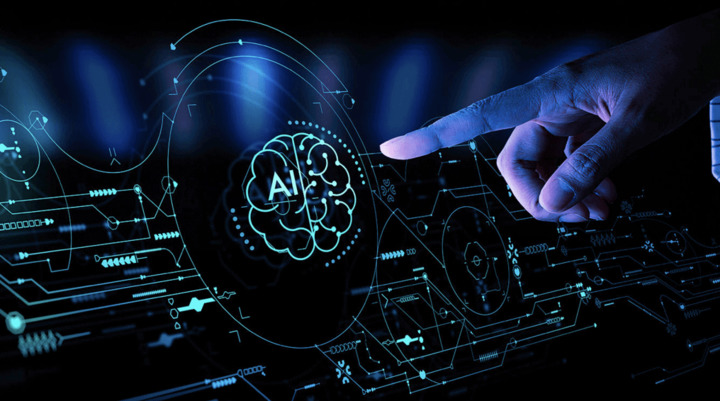The Impact of AI on Cybersecurity: Opportunities and Challenges

Among all technologies revolutionizing the world, Artificial Intelligence (AI) is at the forefront due to its remarkable potential to emulate human intelligence, automate processes, and unlock untold possibilities in various fields. Simultaneously, the growing reliance on digital platforms has underscored the critical importance of cybersecurity, ensuring the protection of systems, networks, and data from burgeoning cyber threats.
In this article, we delve into the impact of AI on cybersecurity, exploring both its exciting potential and the complex issues it raises. By shedding light on this topic, we aim to provide a comprehensive understanding that can inform better strategies, facilitate knowledgeable policy decisions, and guide us through the uncharted territory of an AI-integrated cybersecurity landscape.
Understanding AI and Cybersecurity
The Concept of Artificial Intelligence
AI refers to the capability of a machine or a computer program to mimic human intelligence processes, learn from experiences, adapt to new inputs, and perform tasks typically requiring human intelligence. It’s an interdisciplinary concept that combines computer science, psychology, and philosophy. It even involves linguistics to create machines exhibiting human intelligence aspects, such as learning, problem-solving, planning, natural language understanding, and perception.
AI can be broadly categorized into two types – Narrow and General.
Narrow AI, also known as Weak AI, is designed to perform specific tasks, such as voice recognition, recommendation systems, or image recognition. This is the kind of Artificial Intelligence we see in our everyday lives, in systems like Siri, Alexa, or Google Assistant.
General AI, also known as Strong AI, refers to systems that possess the ability to understand, learn, adapt, and implement knowledge across a broad range of tasks at the level of a human being. Although this type exists mainly in the realm of science fiction and future speculation, it represents the ultimate goal for many researchers.
Understanding Cybersecurity
Сybersecurity has become critically important as our dependence on information technology has grown exponentially in all aspects of life. Cyber threats pose a significant risk from personal information to financial data and national security. Cybersecurity is essential to protect our digital lives’ integrity, privacy, and security. It is a fundamental concern for individuals, businesses, and governments alike.
Cyber threats are diverse and constantly evolving. Common types include:
- malware, which is software designed to cause harm to a computer system;
- phishing, where attackers trick individuals into revealing sensitive information;
- ransomware, which involves encrypting a user’s data and demanding a ransom for its return;
- Denial of Service (DoS) attacks, which overload a system’s resources, making it unavailable to users.
More sophisticated threats include Advanced Persistent Threats (APTs), where an attacker gains access to a network and stays undetected for a long period. Another is a Man-in-the-Middle (MitM) type of attack, where the attacker covertly intercepts and may change the communication between two parties who suppose they are communicating with each other.
Understanding these threats is the first step toward developing effective cybersecurity measures.
The Role of AI in Cybersecurity

Artificial Intelligence plays a pivotal role in cybersecurity by enhancing threat detection, improving incident response, and enabling proactive defense strategies.
Enhancing Threat Detection
- Machine Learning in Identifying New Threats
One of Artificial Intelligence’s key applications in cybersecurity is using machine learning for threat detection. Traditional cybersecurity measures often rely on predefined rules or signatures to identify threats, which can be ineffective against new, unknown threats or sophisticated attacks. Machine learning algorithms, however, can learn from the data they process, enabling them to identify patterns and anomalies that may signify a threat. This helps detect zero-day exploits and polymorphic malware that can evade traditional security measures.
- AI’s Ability to Predict Potential Attack Vectors
Artificial Intelligence not only enhances threat detection but also contributes to predicting potential attack vectors. By analyzing historical data of past attacks, its systems can predict the likelihood of future threats, allowing organizations to fortify vulnerable points in their systems proactively. This predictive capability can be precious in identifying potential targets of APTs or spotting emerging trends in cyber threats.
Improving Incident Response
- Automation of Routine Tasks
Artificial Intelligence can significantly enhance incident response by automating routine tasks. This includes tasks like log analysis, threat hunting, or even initial stages of incident response like triage and containment. Automating these tasks can help reduce the response time and free up cybersecurity professionals to focus on more complex tasks, thereby improving the overall efficiency of cybersecurity operations.
- Real-Time Response to Threats
AI’s real-time processing capabilities can greatly enhance the speed and efficiency of threat response. Traditional methods may involve time-consuming manual processes, but Artificial Intelligence systems can analyze and respond to threats as they occur. For example, it can help implement automated responses to detected threats, such as isolating affected systems or blocking malicious IPs, thereby reducing the potential damage of a cyber attack.
Bolstering Security Posture Through Predictive Analytics
- AI in Predicting Future Security Trends
Artificial Intelligence, particularly machine learning, can analyze large volumes of data and identify patterns that may be indicative of future security trends. This predictive capability allows organizations to anticipate potential threats and adjust their security measures accordingly. This might include predicting future targets of attackers, emerging threat tactics, or vulnerabilities that may be exploited.
- Utilizing AI for Proactive Defense
The predictive capabilities of Artificial Intelligence can be used to build a proactive defense strategy. Rather than responding to attacks after they occur, it can help organizations anticipate threats and take preemptive measures to thwart them. For instance, its systems can identify vulnerabilities in a system that could be exploited and suggest necessary patches or upgrades. This proactive approach to cybersecurity not only strengthens an organization’s security posture but also reduces the costs associated with incident response and recovery.
Opportunities Presented by AI in Cybersecurity

Artificial Intelligence presents a host of opportunities in cybersecurity, offering advancements that can significantly enhance efficiency, scalability, and innovation.
Improved Efficiency and Accuracy
- Case Studies Demonstrating AI’s Effectiveness
AI-driven cybersecurity solutions have demonstrated their effectiveness in numerous case studies. These real-world examples highlight how it can analyze vast amounts of data, detect complex patterns, and identify threats with higher accuracy and speed than traditional methods. Case studies can showcase the tangible benefits of AI in terms of threat detection, incident response time, and overall operational efficiency.
- Comparative Analysis with Traditional Methods
Comparing AI-powered cybersecurity solutions with traditional methods reveals the significant improvements in efficiency and accuracy that AI brings. By automating labor-intensive tasks, reducing false positives, and adapting to evolving threats in real-time, it enables organizations to stay ahead of cyber threats. Comparative analysis helps quantify the advantages of AI, demonstrating its potential to revolutionize cybersecurity practices.
Scalability of Security Operations
- How AI Helps in Managing Growing Data Volumes
As the volume of data generated grows exponentially, AI offers a solution to manage and analyze this vast amount of information effectively. Its algorithms can quickly process and analyze massive datasets, identifying patterns, anomalies, and potential threats that might otherwise go unnoticed. This scalability enables organizations to handle the ever-increasing volume of data generated in modern digital environments.
- AI’s Potential to Supporting Large-Scale Cybersecurity Operations
Traditional cybersecurity operations often struggle to scale up to address the demands of large-scale systems and networks. AI, however, can handle complex and diverse environments, allowing for seamless scalability. AI-driven solutions can efficiently monitor and protect extensive networks, identify vulnerabilities across multiple endpoints, and facilitate threat response across distributed systems. This potential for scalability enhances the effectiveness and coverage of cybersecurity operations.
Innovations and Future Possibilities
- Emerging Trends in AI-Driven Cybersecurity
The field of AI-driven cybersecurity continues to evolve rapidly, with emerging trends shaping the landscape. These trends include the integration of AI with threat intelligence, leveraging it for behavior-based anomaly detection, and using AI-powered security analytics platforms. Understanding these emerging trends provides insights into the future of AI in cybersecurity and opens doors to new possibilities.
- Potential Breakthroughs and Developments
The potential breakthroughs and developments in AI-driven cybersecurity hold great promise. Innovations like explainable AI, adversarial machine learning, and secure AI architectures aim to address the challenges and limitations of current AI-based security solutions. Furthermore, these advancements could lead to greater transparency, robustness, and reliability, paving the way for more effective and trustworthy applications in the realm of cybersecurity.
Challenges and Concerns in Integrating AI into Cybersecurity

As the integration of AI into cybersecurity gains momentum, several challenges and concerns need to be addressed. While it offers tremendous potential, understanding and mitigating these challenges are essential to ensure AI’s responsible and effective use in safeguarding digital systems.
Technical and Logistical Challenges
- Difficulty in AI Integration and Implementation
Integrating Artificial Intelligence into existing cybersecurity infrastructures can pose technical challenges. For example, organizations must navigate compatibility issues, ensure seamless integration with diverse systems, and address interoperability concerns. Furthermore, acquiring and deploying the necessary Artificial Intelligence expertise and resources can be demanding, requiring skilled professionals and robust computing infrastructure.
- Concerns about AI System Robustness and Reliability
The robustness and reliability of Artificial Intelligence systems are critical considerations. Their algorithms rely on large datasets for training, and biased or incomplete data can lead to inaccurate or offset outcomes. Therefore, ensuring the integrity of training data and minimizing algorithmic biases is vital to maintain the effectiveness and fairness of Artificial Intelligence systems in cybersecurity applications.
Ethical and Legal Implications
- Privacy Issues Related to AI Use in Cybersecurity
The use of Artificial Intelligence in cybersecurity raises concerns about privacy and data protection. Its systems often require access to substantial amounts of sensitive data for effective threat detection and analysis. Striking a balance between utilizing data for security purposes and respecting individuals’ privacy rights is crucial. Implementing robust data protection measures, anonymization techniques, and ensuring compliance with relevant regulations are essential considerations.
- Potential Misuse of AI Technologies
The increasing sophistication of Artificial Intelligence technologies brings ethical and legal implications. For example, malicious actors could misuse its capabilities to orchestrate sophisticated cyber attacks, making them harder to detect and defend against. In addition, the development of AI-powered offensive tools raises concerns about a potential escalation in cyber warfare and the need for international regulations and norms to address these challenges.
Emerging Threats: AI-Powered Cyber Attacks
- Use of AI by Cybercriminals
Cybercriminals are leveraging Artificial Intelligence to devise more advanced and evasive attack techniques. For example, it can automate attacks, generate realistic phishing emails, or develop malware that adapts and evolves to circumvent traditional defenses. This requires security professionals to enhance their capabilities to counter AI-powered cyber threats effectively and continuously.
- How AI Might Complicate the Cybersecurity Landscape
The introduction of Artificial Intelligence introduces new complexities to the cybersecurity landscape. For example, it requires understanding the nuances of algorithms, monitoring for adversarial attacks that attempt to manipulate Artificial Intelligence systems, and ensuring that AI-based security measures remain resilient in the face of evolving threats. In addition, its dynamic nature necessitates ongoing research, robust testing, and adapting security strategies to mitigate potential vulnerabilities.
Balancing the Opportunities and Challenges

Successfully integrating Artificial Intelligence into cybersecurity requires a balanced approach that maximizes opportunities while addressing the associated challenges. By taking proactive steps, implementing ethical strategies, and preparing for potential AI-powered cyber threats, organizations can navigate this complex landscape and harness its transformative potential securely and responsibly.
Steps Towards Secure AI Integration in Cybersecurity
Secure integration of AI in cybersecurity can be achieved through the following steps:
- 1. Comprehensive Risk Assessment: Conduct a thorough risk assessment to identify potential vulnerabilities, understand the impact of Artificial Intelligence integration, and develop appropriate risk mitigation strategies.
- 2. Robust Data Governance: Establish strong data governance practices to ensure the integrity, confidentiality, and privacy of data used by Artificial Intelligence systems. This includes defining data access controls, implementing encryption measures, and regular data audits.
- 3. Rigorous Testing and Validation: Implement thorough testing and validation processes to ensure Artificial Intelligence algorithms and models’ effectiveness, reliability, and robustness. This includes extensive testing, diverse datasets, and continuous monitoring and evaluation.
- 4. Ongoing Monitoring and Maintenance: Continuously monitor the systems for any signs of algorithmic bias, system vulnerabilities, or performance degradation. Implement regular maintenance, updates, and patches to address emerging threats and vulnerabilities.
Strategies to Address Ethical and Privacy Concerns
To address ethical and privacy concerns associated with Artificial Intelligence in cybersecurity, organizations should consider the following strategies:
- Ethical Guidelines and Policies: Develop and adhere to comprehensive ethical guidelines and policies that govern the use of Artificial Intelligence in cybersecurity. These should encompass data privacy, algorithmic transparency, fair use, and responsible deployment of AI-powered security measures.
- Privacy by Design: Incorporate privacy-enhancing measures from the early Artificial Intelligence system development stages. Implement techniques such as differential privacy, data anonymization, and access controls to ensure the protection of sensitive information.
- Transparent Decision-Making: Foster transparency in Artificial Intelligence systems by ensuring explainability and interpretability. Understand and communicate how the algorithms make decisions, enabling better trust and accountability.
Preparations for Potential AI-Powered Cyber Threats
To prepare for potential AI-powered cyber threats, organizations should undertake the following preparations:
- AI-Enabled Threat Intelligence: Invest in AI-powered threat intelligence systems that leverage machine learning and data analytics to detect, analyze, and respond to emerging AI-driven cyber threats.
- Adversarial Testing: Conduct adversarial testing to assess the resilience of Artificial Intelligence systems against potential attacks. This involves simulating adversarial scenarios and attempting to manipulate or deceive Artificial Intelligence algorithms into identifying vulnerabilities and strengthening defenses.
- Collaboration and Knowledge Sharing: Foster collaboration among cyber safety experts, AI researchers, and policymakers to exchange knowledge, share best practices, and collectively address the challenges posed by AI-powered cyber threats.
Summary
In summary, integrating Artificial Intelligence into cybersecurity presents a landscape filled with immense opportunities and complex challenges. It can potentially revolutionize threat detection, incident response, and security measures by enhancing efficiency, scalability, and predictive analytics.
However, the integration of Artificial Intelligence also brings technical complexities, ethical considerations, and the emergence of AI-powered cyber threats that require careful navigation. Therefore, striking a balance between leveraging the opportunities and mitigating the challenges is crucial for the responsible and effective implementation of AI in cyber safety, empowering organizations to protect their digital assets and adapt to the evolving threat landscape.
